DISCLOSURE: If I link to relevant products or helpful info it may be an affiliate link, meaning I may earn a small commission. As an Amazon Associate & other affiliate, I earn from qualifying purchases at no extra charge to you. The views & opinions are my own. Please see the disclaimer and privacy policy.
Last Updated on November 9, 2025
Guest Post by Ella McKendrick
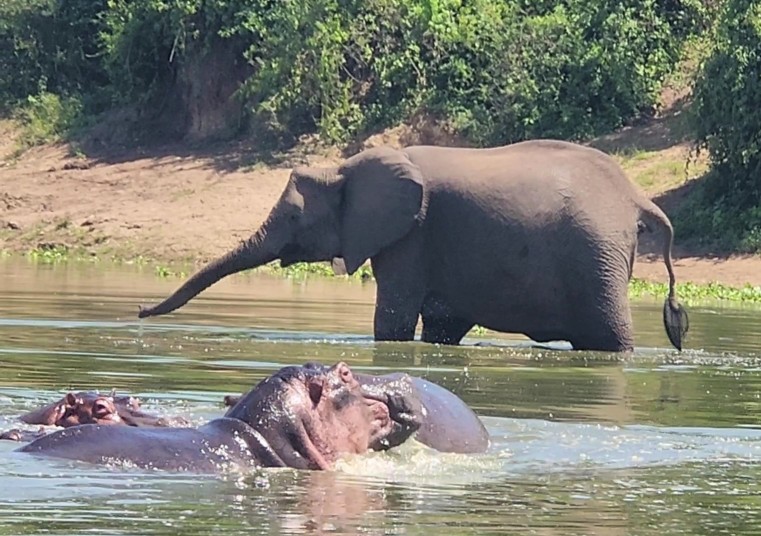
The author, Ella, has been on many safaris in Africa and has seen dozens of herds of elephants. So, it’s no wonder that she has some good advice about the best places to see elephants in Africa.
Come on this safari as we find our elephants in the wilds of Africa!
BEST PLACES TO SEE ELEPHANTS IN AFRICA
Where to see elephants in Africa
When you imagine your dream African safari, there’s a high chance that elephants are high on your list of wildlife to encounter. Reaching heights of up to 13 feet, elephants are Africa’s gentle giants and are one of the ‘Big Five’ – often the top 5 animals on everyone’s safari bucket list.
Will you see an elephant on an African safari?
However, just booking an African safari doesn’t guarantee that you’ll encounter elephants. There are many national parks and reserves across the African continent that have low numbers of elephants. Hence, it’s important to ensure that you include some elephant havens in your itinerary in order to increase your chances of bumping into these intelligent animals.
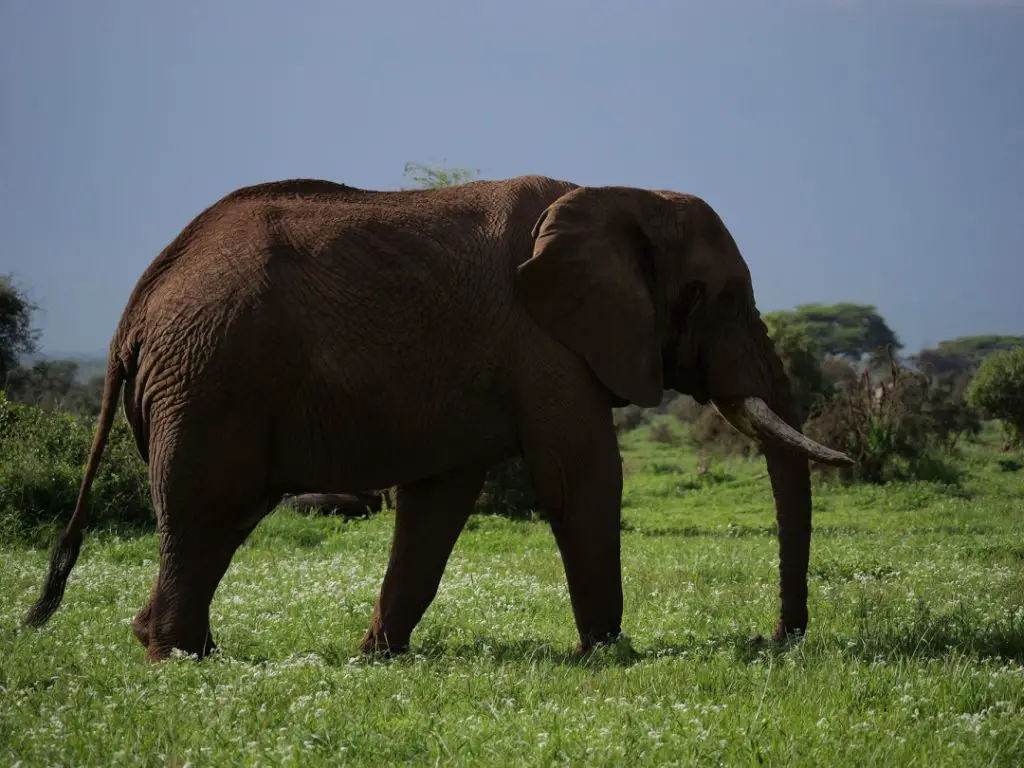
In this article, I’m going to give you the top 7 wildlife destinations in Africa to see elephants.
1. Murchison Falls National Park, Uganda
Combining viewing huge herds of elephants and other wildlife with spectacular scenery, visiting Murchison Falls National Park in Uganda is one of Africa’s hidden gems and perhaps the best place to see elephants in Africa. Situated along the north-eastern shores of Lake Albert, this 4,000 km² national park is the country’s largest and oldest nature reserve and one of Uganda’s most popular safari destinations.
Even though it took a pounding during the civil war years in the 1980s, the wildlife stocks have made a miraculous recovery and today this park is home to a thriving elephant population of over 1,500, as well as most other species. Sadly, rhinos are missing from this otherwise magical and pristine wilderness.

The landscape of Murchison National Park is bisected by the Victoria Nile, which is a great place to go whitewater rafting in Uganda. The Nile provides breathtaking scenery and life for all the surrounding fauna and flora as it cuts its way through the densely wooded rift valley. Creating an 80 km long white water cascade, it then squeezes through a narrow eight-meter gorge, before plunging 45 meters to create the famous Murchison Falls. A truly magnificent spectacle that you won’t want to miss! Plan your trip to Uganda to see all the wild elephants.

Need more information about what to pack for your trip to Uganda? Take a look at all my tips for what to bring on this bucket list trip to the Pearl of Africa!
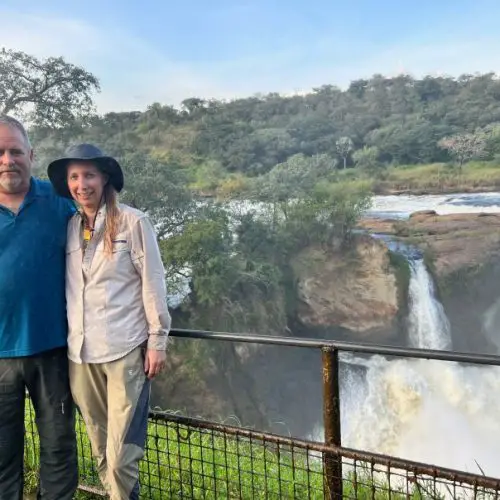
2. Amboseli National Park, Kenya
Home to some of the largest herds of African elephants in the world, Amboseli National Park is definitely within my top 5 favorite national parks across Africa. Not only are the elephant herds here massive, but the elephants themselves are incredibly impressive. Amboseli and neighboring Tsavo National Park are home to the world’s last ‘big tuskers’ – elephants with tusks that almost touch the ground.
Although relatively small in size when compared with the likes of the Serengeti, Amboseli National Park has a varied ecosystem of marshlands, woodlands, and vast savannahs, which makes game really easy to spot. Boasting of abundant wildlife, I was fortunate to see lions, cheetahs, buffaloes, hippos, giraffes, zebras, hyenas, loads of wildebeest and buck, and of course, the stars of the park, humongous herds of elephants.
As if the elephants know that they are the main stars here, I was amazed at how unperturbed they seemed to be despite the large number of vehicles approaching them at really close range. Witnessing large herds moving through the open grasslands, it was fascinating to see how the mothers shield their babies, ensuring that they all keep up and not stray away from the herd.
Another highlight for me was the spectacular scenery. Having a herd of elephants passing in front of you with the snow-capped Mount Kilimanjaro as a backdrop truly captures the essence of Africa in one breathtaking sight.
Amboseli National Park isn’t fenced. This allows the large elephant herds to migrate out of the park which is necessary to allow them to live as natural lives as possible. There is however a major drawback to this. Once the elephants leave the safety of Amboseli, they are at the mercy of humans.
Within the last few months, three super tuskers have sadly lost their lives to big game hunters, having crossed the border from Kenya (where hunting is banned) to Tanzania.
This now leaves only 10 of these older super-sized specimens that have tusks weighing around 50 kgs in the Amboseli National Park out of a population of around 2,000 elephants.
Several organizations are campaigning for better protection of Amboseli’s elephants, including Amboseli Trust for Elephants.
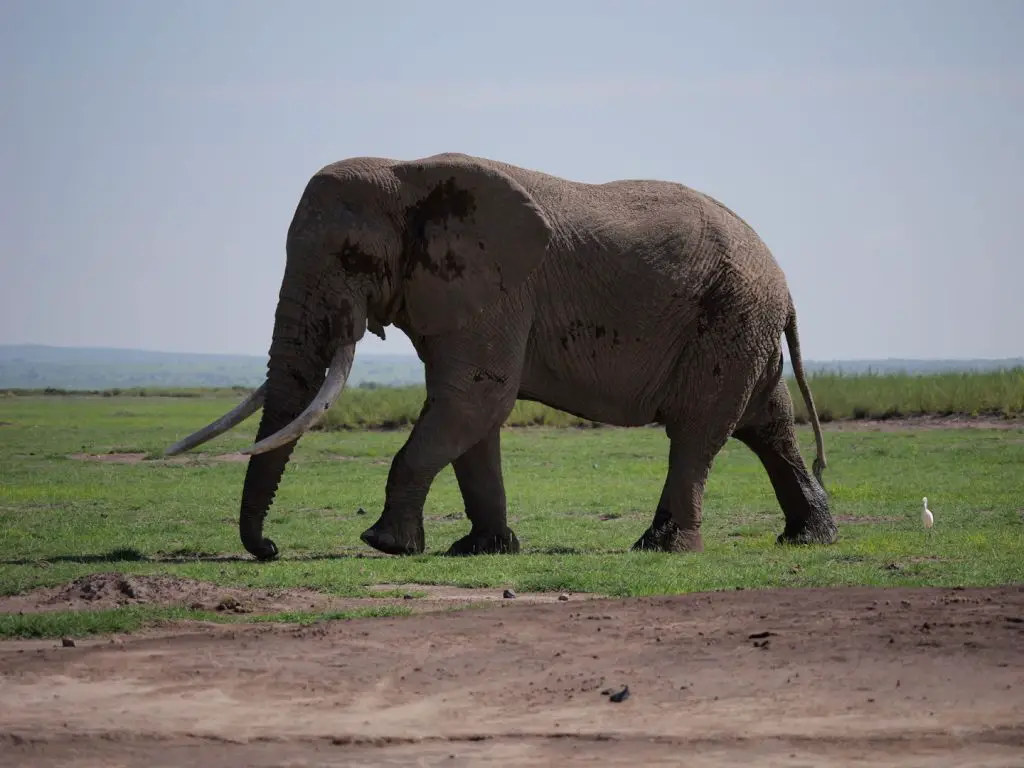
3. Chobe National Park, Botswana
Also famed for its massive elephant population, Chobe National Park is often touted as the best place on earth to view elephants.
Its multi-ecosystem landscape is not only home to pretty much every single species of large animal on the continent, but in vast numbers too. Rhinos, however, are pretty rare with their numbers having been decimated in past years, but thankfully, they are currently on the rise.
Chobe’s abundance of watering holes and river frontage as well as its lush vegetation provide water, food, and shade, which are basic needs for big animals like elephants to thrive in. This has contributed to Chobe having the largest elephant population in Africa, with an estimated 150,000 elephants passing through this region every year. Although no particular animal sighting can ever be guaranteed in any game park, you’d have to be pretty unlucky not to encounter an elephant here.
The best time to visit Chobe is during the dry season when guides make a beeline to the river banks and watering holes which are often teeming with wildlife of every kind. You can expect to encounter lions, buffaloes, giraffes, zebras, wildebeest, kudus, impalas, and other buck species, and of course loads of elephants splashing and spraying water everywhere.
As well as setting out on game drives, you have the opportunity to embark on a river safari within Chobe National Park. Being surrounded by water and wildlife in every direction is so exhilarating, getting surprisingly close to elephants, hippos, crocs, and game quenching their thirst along the river banks. As for the birdlife, apart from over 400 species that abound here, watching fish eagles swooping down on the water makes the experience all the more memorable.
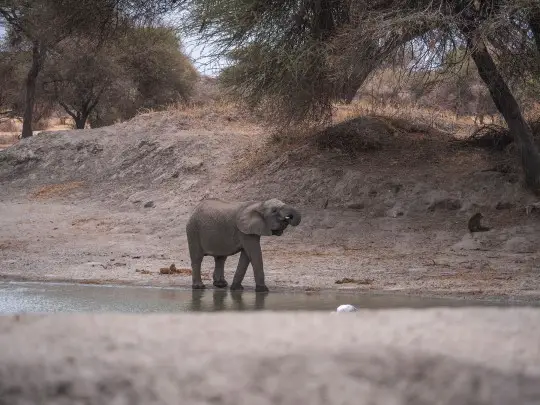
4. Etosha National Park, Namibia
Situated in the northern region of Namibia, Etosha National Park is another elephant hotspot boasting of a population of over 2,000 of these magnificent giants. Although Etosha elephants don’t seem to have the biggest tusks, probably due to a lack of certain minerals in the soil, they are the tallest elephants in Africa.
Having visited Etosha during the dry season I soon realized that the sparse vegetation on the flat and expansive landscape made elephants and other wildlife easier to spot. Strewn in among this seemingly arid landscape, numerous water holes provide the best places to view the game as they spend much of their day in and around them.
Etosha is also known for its vast numbers of lions, which pose the only non-human threat to elephants, and especially the very young. Among its abundant wildlife I was fortunate to come across lions, huge herds of wildebeest, gemsbok, springbok, giraffes, zebras, black-faced impalas, ostriches, and elands, which are the biggest antelope species in Africa.
A standout feature of Etosha is the number of flood-lit watering holes close to many camps and lodges. Witnessing the behavior of so many animals hanging out around the water at night was certainly the highlight of my visit.
Etosha National Park spans across 22,000 km², with nearly a quarter of it being taken up by Africa’s largest salt pan, which is 130 km long and up to 50 km wide. During the winter months, it is a bone-dry dusty bowl, but when the rains arrive it floods into a truly magnificent blue oasis attracting a wide range of game and birds including a million pink flamingos. A sight to behold when they all take flight.

5. Tarangire National Park, Tanzania
Situated in Tanzania about two and a half hours south of Arusha, Tarangire is a firm favorite for elephant lovers like me, and famed for having some of the biggest herds on the African continent. When I heard about its high concentration of elephants, I just had to go there!
Although the climate is somewhat drier than the Serengeti further north, Tarangire still has a fair share of dense woodlands, which made spotting lions and other cats rather difficult in places (although I still managed to come across a group of four lions!). The sheer number of its famous elephants, however, more than made up for that.
Herds have been estimated to reach around 300 individuals and witnessing them browsing and moving through the bush in such numbers was absolutely incredible. A highlight for me was watching a large family of elephants drink from one of the park’s watering holes. A young calf was among them and watching him frolic about in the water, splashing and rolling over, was one of the highlights of my safari.
Almost the entire park has the Tarangire River running through it, which attracts thousands of elephants, buffaloes, zebras, giraffes, wildebeest, numerous buck species, and, of course, loads of predators too. Birdlife is a sheer joy here with over 500 species darting in and out of the canopy.
Being close to the Serengeti and Ngorongoro Crater, Mount Kilimanjaro, and the Kenyan border, Tarangire can easily be included in a combined Tanzania and Kenyan safari, which would make for a truly memorable African adventure, particularly if you time your trip during the great migration in Africa.
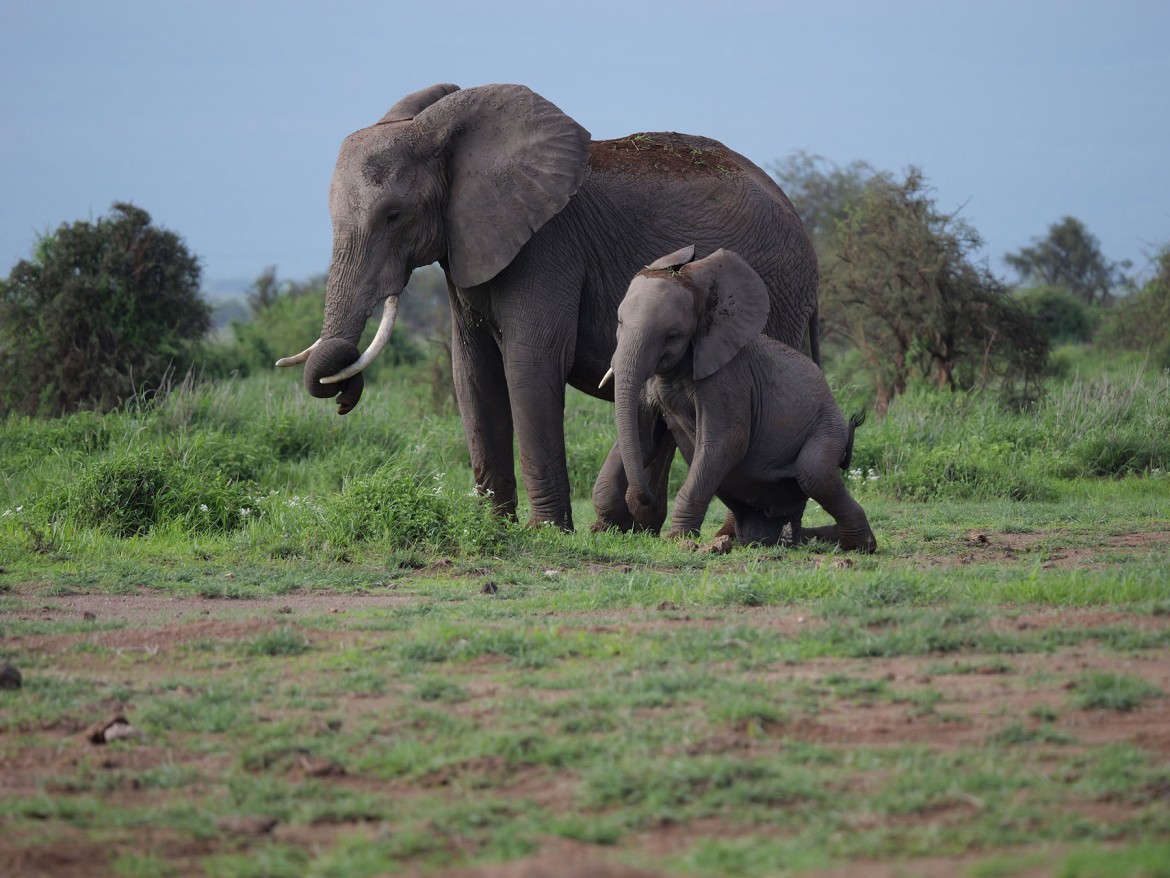
6. Mana Pools National Park, Zimbabwe
Situated in the northern section of Zimbabwe below the banks of the mighty Zambezi River, the diverse landscape of the Mana Pools National Park is home to an abundance of wildlife, including 12,000 elephants. It contains most of Africa’s famed large mammals except giraffes and rhinos, the latter of which have been poached to extinction. Apparently, the steep escarpment and vegetation does not suit giraffes.
Although I had been told that this place was absolutely stunning, nothing prepares you for your first glimpse of the dense woodlands, shadows dancing beneath the trees as animals attempt to keep themselves concealed.
One of the best ways to see the beauty of Mana Pools is on foot, accompanied by a guide. A walking safari allows you to get incredibly close to many animals, which you may find seem surprisingly unperturbed by your presence. Witnessing elephants standing on their back legs, stretching to browse on the foliage and seeds of the towering acacia trees, will definitely be a sight to remember. This is perhaps the only place on earth where you can witness this unique behavior.
For photographers, this park is sheer heaven. The diffused light filtering through the forest canopy creates a mystical almost haunting backdrop, although you may have to crank up your ISO settings a few notches.
Several lodges lie scattered around the park and close to the river, providing a range of accommodations in the Mana Pools National Park, as well as various tours and activities, like driving, walking, canoeing, boating, and specialized photo safaris.
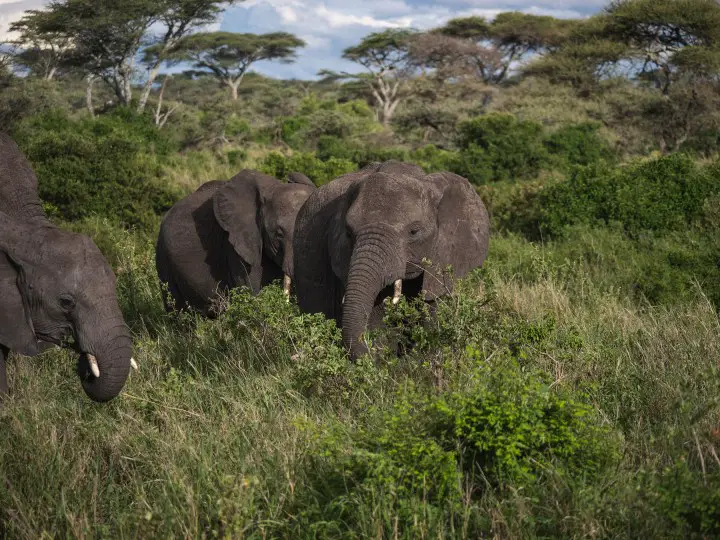
7. South Luangwa National Park, Zambia
Situated in south-eastern Zambia, this 9,000 km² park is known for having one of the densest concentrations of wildlife on the continent and even more so for its huge herds of elephants. Its highly experienced and knowledgeable rangers have also earned this park the title of the ‘Home of Walking Safaris’!
Aside from the magnificent herds of elephants that roam freely around the park, keep your eyes peeled for the king of the jungle (lions), the elusive leopard, and the extremely rare African wild dogs. Sadly, the poaching of rhinos has taken its toll on a massive scale here too, and today there are none left in the park. Zebras are somewhat different here with their black stripes looking as if they were printed in bold, compared to zebras anywhere else. These zebras are known as the Burchell’s zebra and they are endemic to the Luangwa Valley.
As with most wildlife parks in Africa, I found the best time to visit South Luangwa is during the dry season. With most waterholes drying out during that period, much of the wildlife tends to congregate along the Luangwa River, which runs almost across the entire length of the park and makes the animals easier to spot.
A safari in the South Luangwa National Park can start right from your own front door, as elephants frequently walk through the various unfenced campsites and lodges. It doesn’t get any better than that!
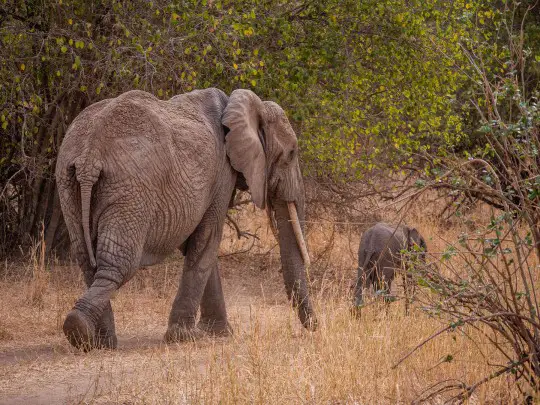
Conclusion about where to find elephants in Africa
So there you have it. Seven of the finest national parks where you can see elephants in Africa in the wild. Though they might differ in landscape, climate, wildlife, and character, the one thing that they all have in common is that they have some of the most impressive and largest elephant populations on the continent.
You honestly can’t go wrong with any of the parks on this list of the best places to see elephants in Africa!
Did I miss your favorite elephant location in Africa? Let me know in the comments.
Written by Ella McKendrick from EllaMcKendrick.com. Ella has a strong passion for all things Africa, particularly its natural wonders. She first set foot on the continent when she was 17 and, since then has visited over 10 countries in Africa and spent countless hours on safari. Find her on Instagram.
Like this post?
Pin for later to find all the Elephants in Africa
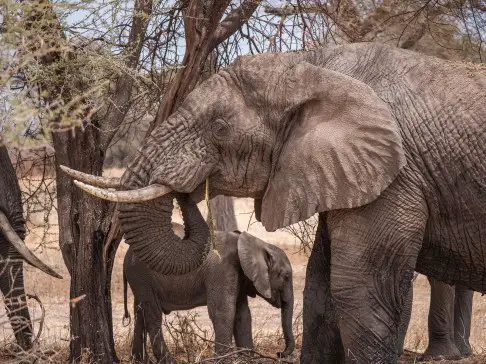


It must be great to elephants in their natural habitat! The closest I ever got to an elephant was at an elephant park in Bali, where I was carried to dinner on the back of an elephant and taken on a safari in the surrounding jungle. This experience left me with very mixed emotions. I later learned that many of these parks are notorious for their mistreatment of the beasts. And they live a life of misery. But at this particular park, all of the animals had been injured or were disease-stricken in the wild. They had been rescued and rehabilitated. Each one had been assigned a personal mahout, with whom they developed a personal relationship. They were called into service five times a day. Otherwise, they were free to roam around. Overall, I don’t think they were mistreated (except I know that carrying park goers on that heavy saddle is not good for their spine), And I absolutely could have done without the daily “show”.
Yes, it is amazing to see them in their natural habitat. The next best thing is what you suggested: visiting sanctuaries that rehabiliate the injured wildlife.
Elephants are wonderful creatures.
I must say I wasn’t able to see them in Africa. I only had the pleasure of encountering Asian elephants in their natural environment.
This seems to be a great guide for an African itinerary for elephant and nature lovers. Pinning it!